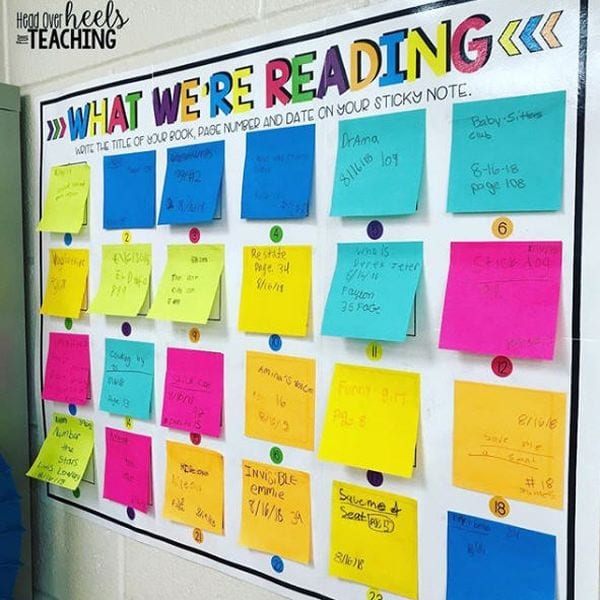- Sticky Notes To Help Understand Twitter Accounts
- Sticky Notes To Help Understand Twitter Messages
- Sticky Notes To Help Understand Twitter Account
- Sticky Notes To Help Understand Twitter Followers
Lists help when you may not want to follow a user but still want to keep track of their happenings on the site. They can be used as an extremely effective way to organize and build followings around certain subject matters and topics. If you can imagine a wall of your favorite Twitter users all in one screen, you have the basics of the Twitter. Sticky notes stick to just about anything – walls, windows, desks – especially the Super Sticky Post-It Notes which I highly recommend. When I’m facilitating collaborative sessions, I often use painter’s or artist’s tape to create an appropriate set of buckets on the wall and then ask team members to add their sticky notes to each area.
There’s a stereotype out there – that agile teams use a lot of sticky notes. Well guess what – it’s true! If you walk around the workspace of almost any agile team, you are likely to see countless colorful sticky notes on walls and windows everywhere. But why? In my experience, sticky notes are one of the most powerful and versatile tools for collaboration I’ve ever used – including software tools. But I’ve also learned it can take a bit of convincing and learning by doing to help others understand the “Power of Post-Its“. Through a series of blog posts, I hope to turn you into a believer too!

As an agile practitioner and coach, I am often facilitating collaborative sessions – to brainstorm, to prioritize, to turn a vision into a plan, to collect feedback, to estimate, to sync on progress. And my number one tool of choice are sticky notes. The seemingly simple pieces of paper are a powerful tool to get the whole team to participate and rapidly share their knowledge and perspectives while collaborating towards a shared goal.

Sticky Notes To Help Understand Twitter Accounts
While I’ll discuss how to use sticky notes for many different types of collaboration in future posts, let’s start by looking at the many benefits of sticky notes as a tool:
Quick
2.3 derivatives: power rule, sine and cosineap calculus. 2.3 Derivatives: Power Rule, Sine and Cosine Notes 2.3 Key. Powered by Create your own unique website with customizable templates. Derivative Product Rule with Sine Cosine & Power Rules Math Help Game Tips: - The derivative Product Rule is used on the product of two relations such as the product y= u v. In general, the Product Rule states that the derivative of the product function y= u v is y'= u v' + u' v. The Power Rule states that the derivatives of Power Functions (of the form (y=x^n )) are very straightforward: multiply by the power, then subtract 1 from the power. We see something incredible about the function (y=e^x ): it is its own derivative. We also see a new connection between the sine and cosine functions.
Capturing a thought on a sticky note is quick. Just grab a pen or Sharpie marker – my favorite writing implement – and jot down your thought in a few words. Great! Now write down another. And another. Awesome – you’re rapidly brainstorming!
B) strengths & structureteaching games for understanding. Compact and Concise

With limited time and attention it’s often important to distill the most important facts down to a few meaningful words or sentences – or a picture. Sticky notes have a finite amount of space, requiring each note to contain a simple and focused idea. Can’t fit it all one sticky note? Good – use a second and third, making sure each item is focused. I bet you didn’t think less space was a good thing!
Divide and Conquer
Sticky notes allow a whole team of people to brainstorm independently at the same time. Just ask each person to write down as many ideas as they can within a 5 to 10 minute time box. Don’t worry about evaluating, discussing, or prioritizing sticky notes yet. Brainstorming is all about unfiltered idea anyway. And by asking everyone to work in parallel without discussion, you’ll get lots of ideas written down.
The Sticky Factor

Sticky notes stick to just about anything – walls, windows, desks – especially the Super Sticky Post-It Notes which I highly recommend. When I’m facilitating collaborative sessions, I often use painter’s or artist’s tape to create an appropriate set of buckets on the wall and then ask team members to add their sticky notes to each area. For example, while facilitating an team retrospective to determine how to improve the team and their process, I’ll make buckets such as “do more of”, “do less of”, “what if…”.
Sticky Notes To Help Understand Twitter Messages
Visible
One of my favorite reasons for using sticky notes is that they’re colorful and visible. By putting your sticky notes in a public space such as an office wall, you and your team are constantly reminded of the sticky notes and encourage others to check out what’s happening. It’s a great way to radiate information and invite other to participate in collaboration.
Touchable
You can touch a sticky note. It’s real. When you’re discussing it, you can pick it up so others know which thing you’re talking about. When you’ve made progress, you can move it from an in progress bucket to a done bucket. When you’re done done with it you can tear it up and throw it away – my favorite!
Simple or Complex
Just like software tools, sticky notes can support just about any process and metadata you can invent. Want to track new features vs. defect – use different colored sticky notes. Want to track how many days something has been in progress – add a dot to the lower left corner of the sticky note each day. Want to track who’s working on what – give each person a unique sticker to add to sticky notes.
Sticky Notes To Help Understand Twitter Account
Repositionable and Groupable
Combined with a wall or window and some painter’s tape to create some buckets, sticky notes make a great system to track just about anything. And best of all – they’re built to be moved around over and over and over. Try reconfiguring your software tools to match your process that quickly!
While I also use many other agile tools, sticky notes are one of my favorite. Try it out yourself and see if you become a believer! Or check out some other team’s sticky notes.
Sticky Notes To Help Understand Twitter Followers
-Adam
